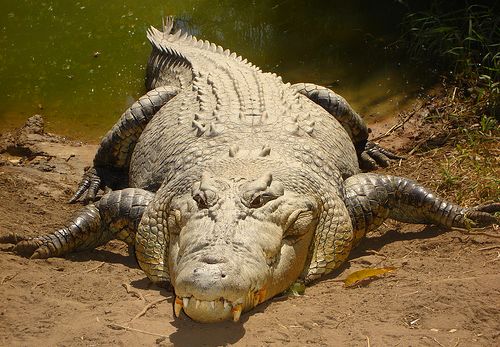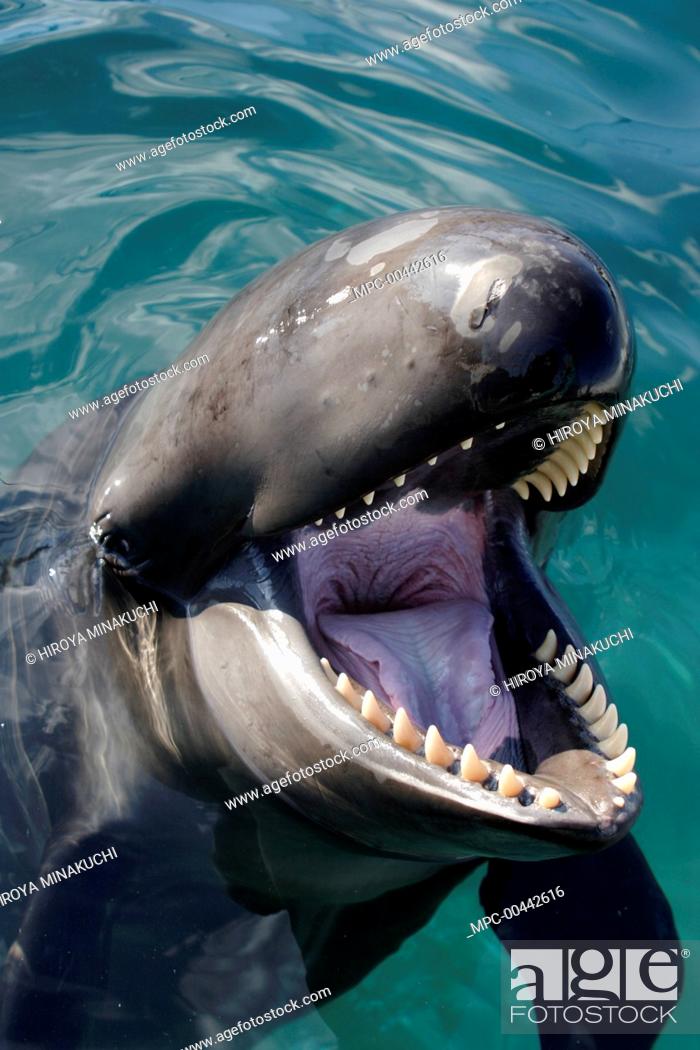Post by rock on May 5, 2019 19:21:05 GMT 5
False Killer Whale - Pseudorca crassidens
The False killer whale (Pseudorca crassidens) is a cetacean, and the third largest member of the oceanic dolphin family (Delphinidae). It lives in temperate and tropical waters throughout the world. As its name implies, the False killer whale shares characteristics, such as appearance, with the more widely known Orca (killer whale). Like the orca, the False killer whale attacks and kills other cetaceans. However, the two dolphin species are not closely related. The False killer whale appears to have a widespread, if small, presence in temperate and tropical oceanic waters. They have been sighted in fairly shallow waters such as the Mediterranean Sea and Red Sea as well as the Atlantic Ocean (from Scotland to Argentina), the Indian Ocean (in coastal regions and around the Lakshwadweep islands) and the Pacific Ocean (from the Sea of Japan to New Zealand and the tropical area of the eastern side), and also in Hawaii. The eastern tropical Pacific is estimated to have in excess of 40,000 individuals and is probably the largest population. The False killer whale is black with a grey throat and neck. It has a slender body with an elongated tapered head and 44 teeth. The dorsal fin is sickle-shaped and its flippers are narrow, short and pointed. The average size is around 4.9 m (16 ft). Females can reach a maximum known size 5.1 m (17 ft) in length and weigh 1,200 kg (2,600 lb), while the largest males can reach 6.1 m (20 ft) and weigh as much as 2,200 kg (4,900 lb).

Saltwater Crocodile - Crocodylus porosus
The saltwater crocodile, also known as estuarine or Indo-Pacific crocodile, (Crocodylus porosus) is the largest of all living reptiles. It is found in suitable habitats in Northern Australia, the eastern coast of India and parts of Southeast Asia. The saltwater crocodile has a longer muzzle than the mugger crocodile: its length is twice its breadth at the base. The saltwater crocodile has fewer armor plates on its neck than other crocodilians, and its broad body contrasts with that of most other lean crocodiles, leading to early unverified assumptions that the reptile was an alligator. Saltwater crocodile skull from The Museum of Zoology, Saint PetersburgNewly hatched saltwater crocodiles measure about 25 to 30 centimetres (9.8–12 in) long and weigh an average of 70 grams (2.5 oz). Males reach sexual maturity at around 3.3 metres (11 ft) at around 16 years of age, while females reach sexual maturity at 2.1 metres (6.9 ft) and 12–14 years. An adult male saltwater crocodile's weight is 409 to 1,000 kilograms (900–2,200 lb) and length is normally 4.1 to 5.5 metres (13–18 ft). However, mature males can exceed 6 metres (20 ft) and weigh more than 1,000 kilograms (2,200 lb) and this species is the only extant crocodilian to regularly reach or exceed 4.8 metres (16 ft). Weight can vary enormously based upon condition and age, older males tending to outweigh younger ones since they maintain prime territories with access to better, more abundant prey. For example, crocodiles at 4.8 metres (16 ft) long have ranged in mass variously from 522 kilograms (1,150 lb) to 1,000 kilograms (2,200 lb). This species has the greatest sexual dimorphism of any modern crocodilian, with females being much smaller than males. Typical female body lengths in the range of 2.3 to 3.5 metres (8–11 ft). The largest female on record measured about 4.2 metres (14 ft). The mean weight of the species as a whole is roughly 450 kilograms (1,000 lb). Saltwater crocodile outside Cairns, QueenslandThe largest size saltwater crocodiles can reach is the subject of considerable controversy. The longest crocodile ever measured snout-to-tail and verified was the skin of a dead crocodile, which was 6.2 metres (20 ft) long. As skins tend to shrink slightly after removal from the carcass, this crocodile's living length was estimated at 6.3 metres (21 ft), and it could have weighed more than 1,000 kilograms (2,200 lb). Incomplete remains (the skull of a crocodile shot in Orissa)[ have been claimed to come from a 7.6-metre (25 ft) crocodile, but scholarly examination suggested a length no greater than 7 metres (23 ft). There have been numerous claims of crocodiles in the 9-metre (30 ft) range: the crocodile shot in the Bay of Bengal in 1840, reported at 10 metres (33 ft); another killed in 1823 at Jalajala on the main island of Luzon in the Philippines reported at 8.2 metres (27 ft); a reported 7.6 metres (25 ft) crocodile killed in the Hooghly River in the Alipore District of Calcutta. However, examinations of these animals' skulls actually indicated animals ranging from 6 to 6.6 metres (20–21.7 ft). A crocodile shot in Queensland in 1957 was reported to be 8.63 metres (28.3 ft) long, but no verified measurements were made and no remains of this crocodile exist. A "replica" of this crocodile has been made as a tourist attraction. Many other unconfirmed reports of crocodiles exceeding 8 metres (28+ ft) have been made but these are highly unlikely. With recent restoration of saltwater crocodile habitat and reduced poaching, it is possible that 7-metre (23 ft) crocodiles are alive today. Guinness has accepted a claim of a 7-metre (23 ft), 2,000 kg (4,400 lb) male saltwater crocodile living within Bhitarkanika Park in the state of Orissa, India, although, due to the difficulty of trapping and measuring a very large live crocodile, the accuracy of these dimensions has yet to be verified.








